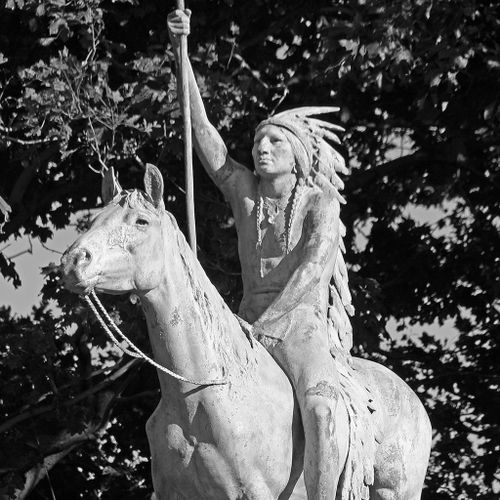A Signal of Peace

Title
A Signal of Peace
Date
1890, installed 1894
Artist
Cyrus Edwin Dallin (1861-1944)
Location
Lincoln Park
Context
Sculptor Cyrus E. Dallin grew up in the Utah Territory close to centers of Ute and Paiute settlements, instilling a life-long respect for Native American life and culture. His father tried to discourage his early displays of talent in art, but he ultimately made his way to East Coast apprenticeships and the opportunity to live and study in Paris. His 1889 conception of a large-scale equestrian sculpture titled “A Signal of Peace” was created when Dallin was twenty-nine years old, and still continuing studies in Paris. He applied influences of European classicism with the dynamic forms of contemporary East Coast sculptors of the United States to create a large scale sculpture intended as a symbol of respect and dignity. The completed sculpture was displayed at the prestigious Paris Salon for 1890, then shipped to Chicago for display at the 1893 world’s fair, where it received praise for its power and respect for native peoples amidst the fair’s omnipresent hype centered on the anniversary of Columbus’ voyage to the North American continent. Before the fair was even over, arrangements were made by wealthy Chicago lawyer and art patron Lambert Tree to purchase the sculpture for $3,000 cash. Offering it for permanent placement in Lincoln Park, Tree was clear in his intent that the monument was intended as a permanent symbol of respect for native peoples who were: “…..oppressed and robbed by government agents, deprived of their lands… shot down by soldiery in wars fomented for the purpose of plundering and destroying their race, and finally drowned by the ever westward tide of population.” As originally created, the rider’s staff extended high above the hand, and was topped with the bronze representation of a feather – a symbol that the bearer is peaceable. Ironically, the upper part of the staff and feather has disappeared. The sculpture’s current lakefront location is not far from the earlier public sculpture “The Alarm” – another work intended to display respect for native peoples amidst an era of atrocities.